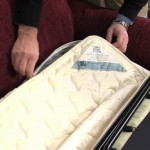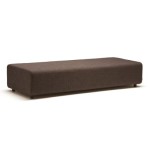Take This Sofa: A Guide to Removal, Disposal, and Sustainable Alternatives
The disposal of unwanted furniture, particularly large items such as sofas, presents a significant logistical and environmental challenge. Sofas, due to their size, weight, and often complex construction, cannot be simply discarded with regular household waste. Understanding the options available for sofa removal, responsible disposal methods, and exploring more sustainable alternatives is crucial for both individual consumers and the environment.
Before initiating the removal process, a thorough assessment of the sofa's condition is necessary. This assessment will influence the most appropriate disposal or removal method. A relatively new and gently used sofa might be a candidate for donation or resale, while a heavily damaged or worn sofa may require dismantling and waste processing. The decision-making process regarding the fate of the sofa should prioritize minimizing environmental impact and maximizing resource recovery.
Understanding Your Sofa Removal Options
Several options exist for removing a sofa from a residence. The suitability of each method depends on factors such as the condition of the sofa, budget constraints, and personal capabilities.
One prevalent option is utilizing professional junk removal services. These companies specialize in hauling away unwanted items, including furniture. They typically offer convenient scheduling and handle the physical labor of removing the sofa from the property. However, it's essential to research and select reputable companies that prioritize responsible disposal practices. Inquire about their recycling policies and ensure they comply with local waste management regulations. Pricing for junk removal services varies based on the size and weight of the sofa, as well as the distance to the disposal facility.
Another option involves self-service removal, which entails the homeowner handling the entire process. This approach can be more cost-effective but requires physical exertion and access to a suitable vehicle for transporting the sofa. Individuals opting for self-service removal should carefully consider safety precautions, such as using proper lifting techniques to avoid injury. Additionally, they must be aware of local regulations regarding bulky waste disposal and locate designated drop-off locations, which may include landfills or recycling centers.
Donating the sofa to a charitable organization or non-profit is a viable option if the sofa is in good, usable condition. Numerous charities accept furniture donations, providing a valuable service to individuals and families in need. Many organizations offer free pick-up services, making the donation process convenient. Prior to donating, it's crucial to contact the charity to confirm their acceptance criteria and ensure the sofa meets their requirements regarding cleanliness, structural integrity, and absence of significant damage. Specific standards in cleanliness and safety are essential, particularly concerning items that will be used in homes with vulnerable populations.
Reselling the sofa through online marketplaces or consignment shops is another potential avenue for disposal. This approach allows the homeowner to recoup some of the original purchase cost while extending the sofa's lifespan. Online marketplaces offer a platform for advertising the sofa to a wider audience, while consignment shops handle the marketing and sales process in exchange for a commission. When reselling, it's important to accurately describe the sofa's condition, provide clear photographs, and set a reasonable price. Transparency regarding any existing flaws or imperfections is crucial for maintaining trust with potential buyers. Moreover, sellers are often responsible for facilitating pick-up or delivery of the sofa.
Responsible Sofa Disposal Methods
The disposal of a sofa should prioritize environmentally responsible practices. Landfilling should be considered a last resort, as it contributes to landfill overcrowding and potential environmental pollution. Exploring alternatives such as recycling and component separation is essential for minimizing the environmental footprint of sofa disposal.
Recycling sofa components is a complex but increasingly viable option. Sofas are typically constructed from a variety of materials, including wood, metal, fabric, and foam. Each material requires a specific recycling process. Some recycling facilities specialize in furniture recycling and possess the equipment and expertise to separate and process these materials. Wood components can be chipped and used in landscaping or particleboard production. Metal frames can be recycled as scrap metal. Fabrics can be shredded and used as filler for other products. Foam can be recycled into carpet padding or reconstituted foam products.
Deconstructing the sofa and separating its components is a labor-intensive but effective way to maximize recyclability. This process involves manually disassembling the sofa and sorting the materials into separate categories. While this requires time and effort, it significantly increases the likelihood that the materials will be recycled rather than landfilled. Additionally, certain components, such as cushions or wooden legs, may be reusable or repurposed for other projects.
Before discarding a sofa, consider the potential for repurposing or upcycling. Upcycling involves transforming the sofa into a new item with a different purpose. For example, the wooden frame could be repurposed into a headboard or shelving unit. The fabric could be used to create pillows or upholstery for other furniture. Upcycling not only prevents waste but also adds a unique and creative touch to home decor.
If landfilling is unavoidable, it's important to ensure the sofa is disposed of at a properly managed landfill that adheres to environmental regulations. Illegally dumping the sofa is not only environmentally harmful but also subject to legal penalties. Contacting the local waste management authority to inquire about proper disposal procedures and designated landfill locations is essential.
Some municipalities offer bulky waste collection programs that specifically cater to the disposal of large items like sofas. These programs often involve scheduling a pick-up date and placing the sofa at the curb for collection. However, these programs may have specific requirements regarding the size and type of items they accept. Therefore, it's crucial to consult the local waste management authority for detailed information about their bulky waste collection program.
Exploring Sustainable Sofa Alternatives
The lifecycle of a sofa significantly impacts the environment, from the extraction of raw materials to its eventual disposal. Choosing sustainable sofa alternatives can minimize this impact and promote a more circular economy.
Opting for sofas made from sustainably sourced materials is a crucial step towards reducing environmental impact. Look for sofas constructed from recycled wood, organic cotton, or other eco-friendly materials. These materials have a lower environmental footprint compared to virgin materials. Certifications such as the Forest Stewardship Council (FSC) and Global Organic Textile Standard (GOTS) can help identify products made from sustainably sourced materials.
Consider purchasing a sofa with a modular design. Modular sofas consist of individual sections that can be rearranged or replaced as needed. This allows for greater flexibility and extends the lifespan of the sofa. If one section becomes damaged, it can be replaced without having to replace the entire sofa. Modular sofas also offer the advantage of being easily disassembled for transportation or relocation.
Investing in a durable and well-constructed sofa is essential for longevity. A sofa built to last will require less frequent replacement, reducing waste and minimizing environmental impact. Look for sofas with sturdy frames, high-quality fabrics, and reinforced stitching. Reading online reviews and researching the manufacturer's reputation can provide valuable insights into the durability of a particular sofa model.
Another approach involves purchasing used or refurbished sofas. This reduces the demand for new sofas and prevents existing sofas from ending up in landfills. Used sofas are often available at significantly lower prices than new sofas. Refurbished sofas have been professionally cleaned and repaired, restoring them to a like-new condition. Inspecting used or refurbished sofas thoroughly before purchasing is crucial to ensure they meet the desired quality standards.
Extending the lifespan of an existing sofa through proper care and maintenance is a simple but effective way to reduce waste. Regularly cleaning the sofa, protecting it from direct sunlight, and addressing minor repairs promptly can significantly prolong its lifespan. Using slipcovers can protect the sofa from spills and stains, while professional upholstery cleaning can remove embedded dirt and allergens.
When selecting a new sofa, considering the end-of-life recyclability of its components is beneficial. Inquire about the manufacturer's recycling programs or policies. Choose sofas with components that are easily separable and readily recyclable. Favoring sofas made from a single material or a limited number of materials simplifies the recycling process. This proactive approach ensures that the sofa can be disposed of responsibly at the end of its useful life.
Ultimately, the choice regarding "Take This Sofa" hinges on a careful assessment of its condition, available resources, and a commitment to environmental responsibility. By considering the various removal options, disposal methods, and sustainable alternatives, individuals can make informed decisions that minimize waste and contribute to a more sustainable future.

Take It Easy Sofa Designer Furniture Architonic

How To Cut A Sofa Apart Fit It Through Door Cuckoo4design

Disassembling Sofa For Moving Everything You Need To Know Dr

Couch Removal Tips Here S How To Take Apart A Sofa Yourself

How And Why I Ed My Sofa To Take Apart A Couch Yourself

How To Take Apart A Couch Throw Away Budget Dumpster

Hardware Frame Office Sofa Indoor Cloth Suit Take Care Patiens In Hospital China Bed Made Com

Sven Walnut Birch Ivory Fabric 3 Seater Sofa Article

Temple Webster Monta 3 Seater Slipcover Sofa

Davis Queen Sleeper Bassett Furniture








